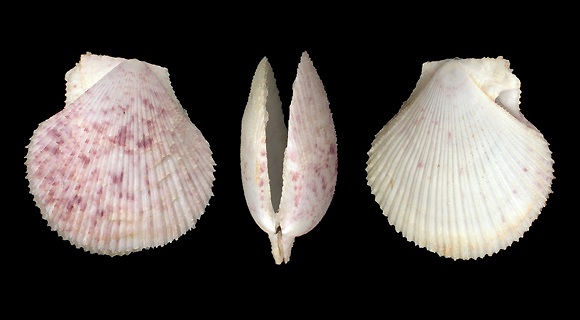
Iceland, Norway & Baltic to Canarias, Azores, Madeira & lusitanian seamounts to Mediterranean. Anchored to various supports such as stones, rocks, dead shells or wreckage, the relief of which it conforms to.
Intertidal to continental shelf and slope, down to 2300m (DORIS). Attachment: byssal when young, cement later. The shell is more rounded than T. multistriata.
Intertidal to continental shelf and slope, down to 2300m (DORIS). Attachment: byssal when young, cement later. The shell is more rounded than T. multistriata.
Original taxon: Ostrea pusio. Young specimen, collected at 6m deep, under rocks, attached by byssus to a stone, off the jetty, Cassis, Provence, S. France. 32mm.
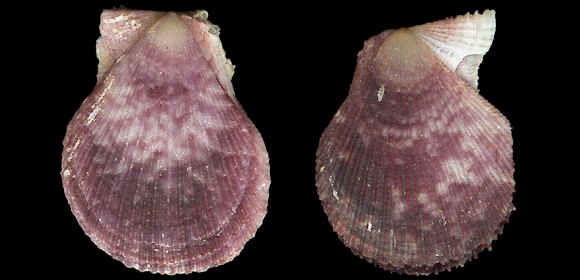
5-6m deep, byssus, rock, jetty, Cassis, 18 & 20mm.
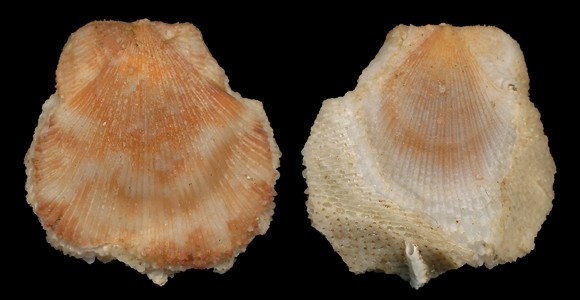
Adult specimen found cemented (no more byssal attachment) in rock crevices, Le Cerf Bank, Callot island, Carantec, Bay of Morlaix, N. Brittany, NW. France. 17mm.
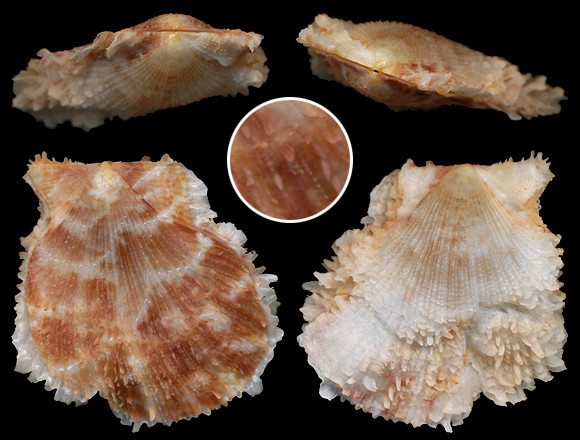
Trawled at 80-100m deep, off N. Morocco, on detritic bottom with red coral, Gibraltar Stait. 25mm.
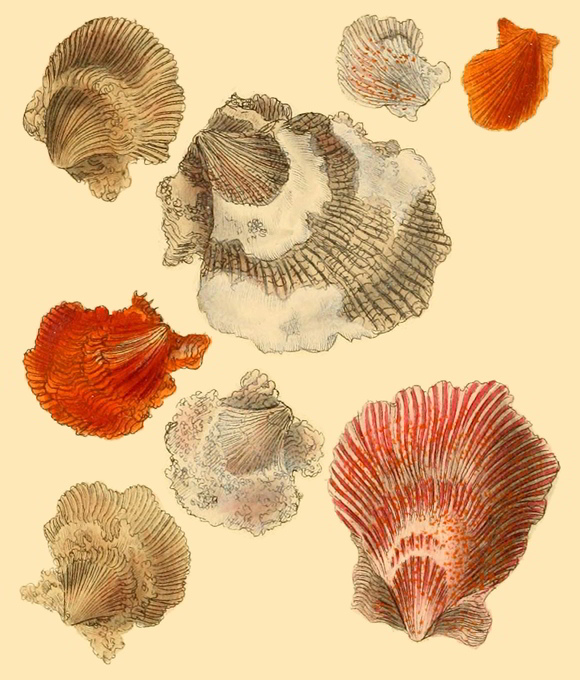
« Dr. Wallace calls these shells the twisted pectines of Stroma, a little island that lies in the Pightland Frith ; he found them on some parts of the Orkneys, where he observed extraordinary cross and strong tides. The irregular form of these pectines rather surprised him. He adds, “I cannot think the odd strange tumbling the tides make there, can contribute any thing to that frame ; yet, after all, I never see them in any other place.” […] Both valves are convex, and much distorted, but the under one is usually the most irregular ; the ribs are numerous, close set, longitudinal, and prominent. […] The ears of this shell are large, and nearly equal, but are often so distorted as to appear much otherwise. It is proper to observe, that […] every shell of this species is constantly found with the same distorted appearance. This circumstance leaves no reason to doubt that such distortions are characteristic of this extraordinary and peculiar species. »